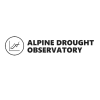Space technologies for drought monitoring and management
The impacts of climate change are ever more apparent. The frequency and scale of devastation and destruction of weather hazards are on an increasing trend. According to the latest Intergovernmental Panel on Climate Change Report (IPCC, 2021) climate change is intensifying the water cycle. This will cause more intense droughts in many regions. Moreover, water-related extremes impact the quality of life disproportionately strong. Drought accounts for 25% of all losses from weather-related disasters in the United States of America (Hayes et al., 2012).








